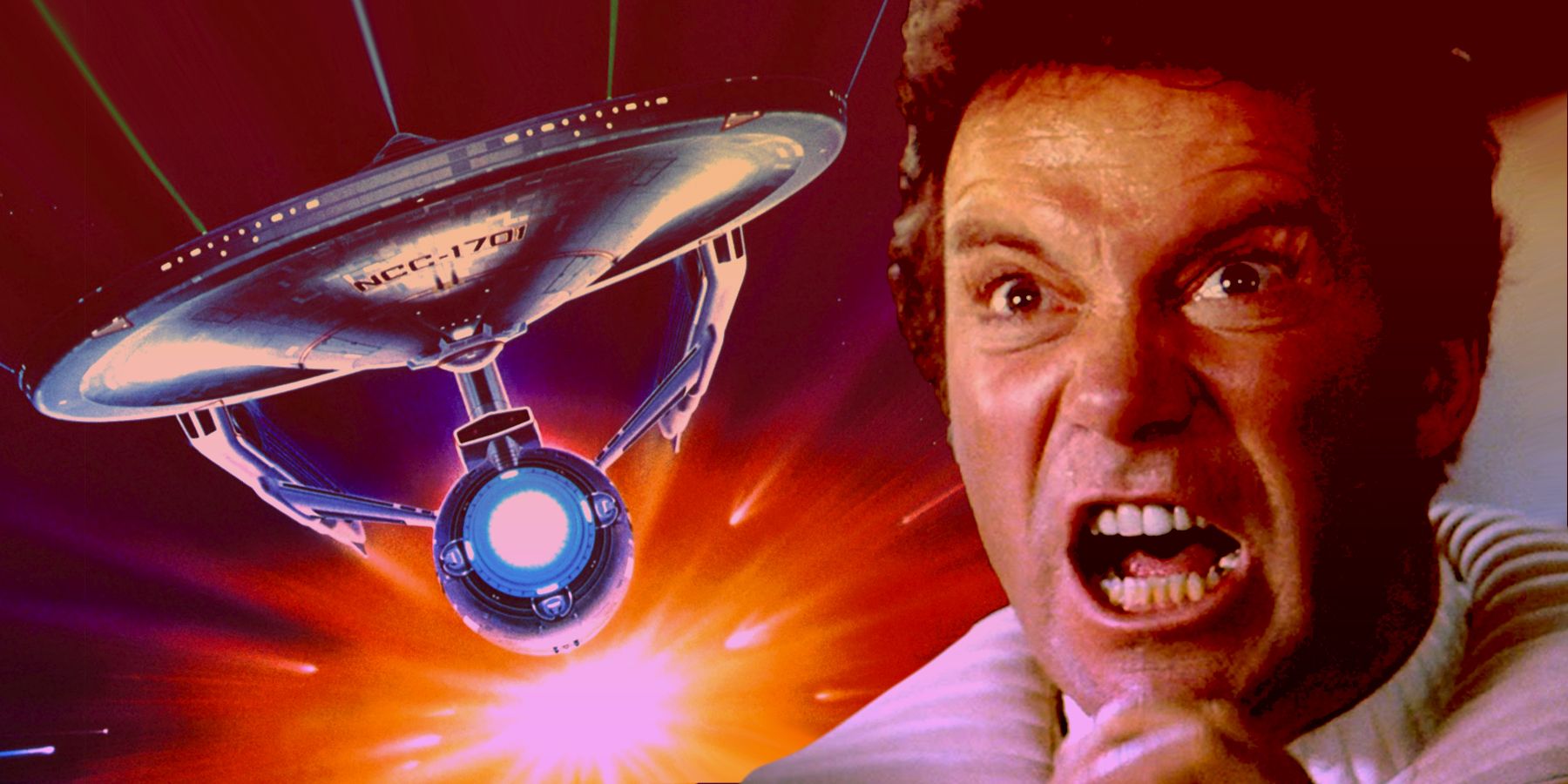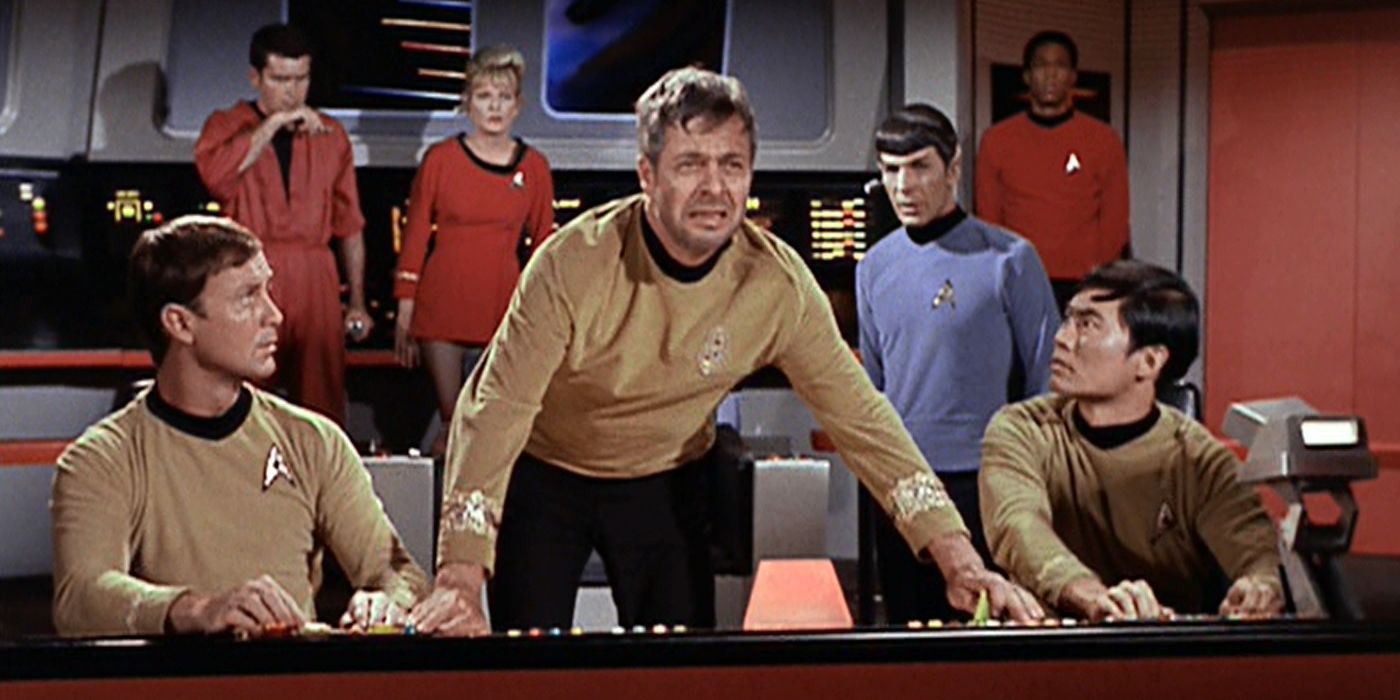There have been hundreds of episodes and over a dozen movies set in the Star Trek universe. Some of them have gone on to become benchmarks for storytelling in television and served as parables for the greatest fears of creators and viewers alike.
Lost in the shuffle of the many new series, sequels, reunions and rumors of a fourth movie in the Kelvin timeline are some of the lesser-known The Original Series episodes. Many of these were designed in part or whole to warn audiences about real-life contemporary issues, and among them, few are better than "The Doomsday Machine."
The Doomsday Machine Relied on Old Star Trek Pillars
Undoubtedly one of the greatest strengths of "The Doomsday Machine" is its guest star, prolific TV actor William Windom in the role of Commodore Matt Decker, captain of the USS Constellation. Windom's role was reduced during production in part because it was believed that the more brooding and intense version of Decker would overshadow Kirk. Indeed, it was originally planned that Decker would be found on the bridge of his decimated ship and would argue significantly more with Captain Kirk himself. These plans were shifted to a more sympathetic and potentially relatable version of the character. Though his time in the captain's chair may be considered cheesy by some standards, Windom's vacant stare as he pilots the shuttle down the maw of the Machine remains haunting.
As for the titular ship, it was intended to be an analog for the devastating and indiscriminate power of nuclear weapons. This episode was written and aired during some of the darkest days of the Cold War between the United States and the Soviet Union when bomb shelters were considered realistic additions to one's house. Fears over MAD (mutually assured destruction) in real life were mirrored in the weapon's complete disregard for those on the planets it had been destroying for untold centuries. Neither it nor the nuclear devices it emulates can be truly controlled or even destroyed; Pandora's box has been opened, and just as many worried that the nuclear bomb would lead to the end of life on Earth, so it is theorized by those within the episode that the Doomsday Machine was a weapon run amok.
The Doomsday Machine's Themes Are Key, Both Musically and Philosophically
Another feather in the episode's cap is its unique score. At the time, and to some extent even today, shows will hire composers to create libraries of situationally useful music that will be edited into various episodes. In the days of the original Star Trek, the same was true, and as "The Doomsday Machine" was the third episode of the second season, it played host to some new, almost immediately iconic themes. Composed by Sol Kaplan, who also scored the original Titanic movie in 1953, the new music added to the episode's solemn tone. Of particular power is the "danger theme," played when the Federation's ships venture close to the opening of the Doomsday Machine; it falls and crescendos again and again, similar to a pulse or even to John Williams' Jaws theme. The most memorable version plays as Decker plunges into the machine, sacrificing himself in such a way that eventually enabled Kirk to find the solution to bring the nightmare to an end.
It is that conclusion that ties the whole episode together perfectly. Though the situation is dire, to say the least, as Spock informs the crew that the Doomsday Machine is on course for the most populous parts of the Federation, a sense of grim optimism is retained. Even in the face of what appears to be an insurmountable challenge, and when they are briefly commanded by Decker on the brink of his own slip into madness, the Enterprise does not err from its duty. This dedication is best emphasized by Decker's own commitment to avenging his crew, to whom he feels a deep loyalty, as well as guilt for their deaths. It is a feeling that Kirk shares with his own crew and they with him, something beyond the bonds of rank and service, that helps to motivate their success. It provides them hope, the currency with which they ultimately barter for their success.
Any episode of any show is ultimately a combination of its individual elements, from script to shot composition. "The Doomsday Machine" is an excellent composite of all its parts, assembled in the right place at the right time for the right audience. It is also powerful now, in a time of increasing anxieties, as a worthy example of the power of character and sacrifice.


